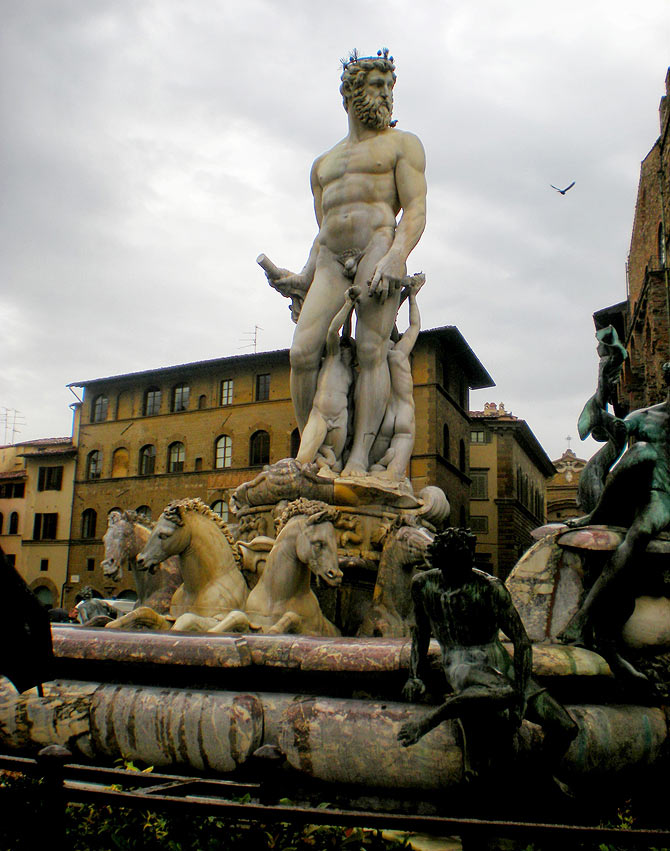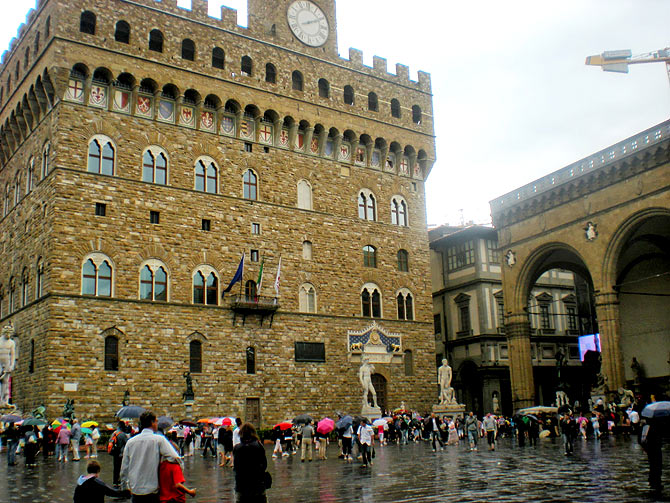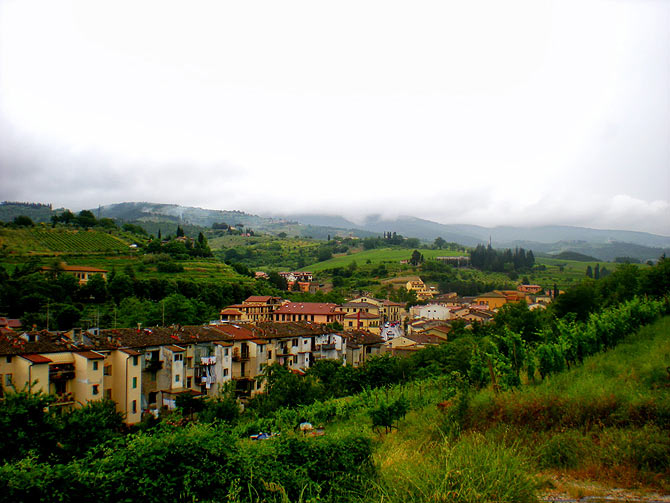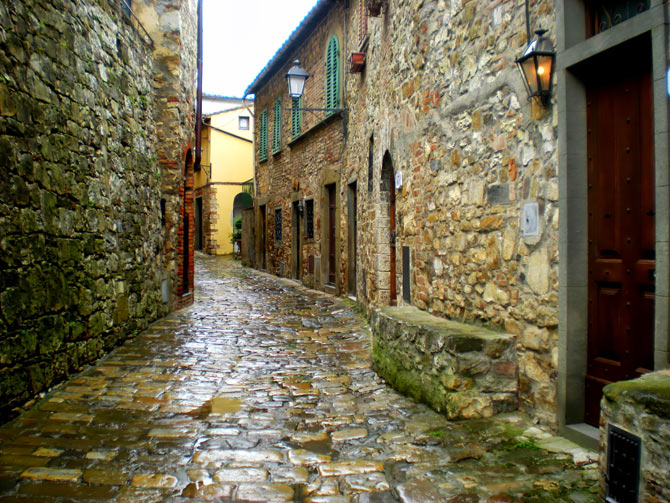 | « Back to article | Print this article |
Travelogue: Under the Tuscan skies
The Italian countryside may not be as flamboyant as its cities. But therein lies its charm discovers Kushal Chowdhury.
It is impossible for me to say now when my fascination with Italy began, or even where its origins lie. Not that this is particularly relevant. But then, any piece of writing must begin somewhere and this seemed like a better way than several others I thought of.
As I thought through what I intended this piece to be about and how it should, therefore, shape up, I also realised that there isn’t going to be a seamless way to weave the mandatory reference to The Godfather into it.
And so, I have decided to mention it here completely out of context quite simply because I can’t not mention it. The Godfather films have become an integral part of my repository of words and images that I draw upon from most frequently while daydreaming of Italy alone or with co-Italophiles (It is a source of great joy to me that Italophilia is a bona fide dictionary term and not just a bastardisation of the more popular French variant), although, the films have very little to do with or in the country, actually.
A friend of mine once travelled through Sicily extensively, including to the village called Corleone. That was all the detail there was to his story when he narrated it to us.
Corleone is, as such, an unremarkable place, very much like any other Sicilian village. But that isn’t the point at all. He had gone there knowing full well that it was unlikely he would find anything of note there. The point is nothing more than to be able to say that one has been to the village called Corleone.
That is how it is with most such objects of personal fascination, I suppose. A scattered, disjointed set of images and feelings and references that one obsesses over (and not always rationally) come first, which one then tries to mould into a coherent form and in doing so, invariably, misses or skips the odd detail and what is left becomes considerably less charming.
My earliest awareness of Italy’s existence, I think, is from football, from when I cheered and jumped and pranced alongside my father after Roberto Baggio sent his penalty kick flying over the cross bar in 1994. I adored Romario’s Brazil and hated Baggio’s Italy all through that World Cup just as my father had instructed me to.
So football clearly cannot be where my enchantment with Italy began.
Over the course of the next decade, as it became clearer that there was more to a country than the sport it plays on one’s television set (that Croatia isn’t merely where Goran Ivanisevic was born and Zimbabwe isn’t merely where India travelled to in order to win matches) and I gained more exposure to other aspects of Italy through films and literature and a popular chat service -- where I once held a fairly lengthy correspondence spanning some months with a purportedly Italian girl I found on a public chatroom -- my perception of Italy was re-formed. But like I mentioned at the outset, when a generally favourable perception changed to fascination, I cannot say.
Also by Kushal Chowdhury
Inside Istanbul -- 'The greatest city' in the world
Travelogue: Under the Tuscan skies
For me, the closest any form of fiction comes to capturing the essence of how I imagine Italy to be are the novels of Andrea Camilleri. His characters inhabit small colourful towns where lives are lived simply and peacefully in small cosy cottages with flowers in the windows, and lunches are family affairs under the shades of trees, and young romantics wander aimlessly on cobblestoned streets and even when there is a crime, there is an element of the languorous in its investigation and the pursuit of its perpetrators.
His are plots and places where a great amount of profound thought can be undertaken but is not undertaken simply because it is considered futile to ponder about what everything means, since nothing means a great deal anyway.
I finally travelled to Italy with a friend for two weeks during the summer of 2009, by which time my fascination with it was already well entrenched. One of my closest friends had already been there a couple of years ago on a three-month student exchange program.
He had returned with enthralling stories and I had kicked myself for not having signed up for student exchange myself. I had, therefore, for said couple of years, listened with increasing jealousy to his stories and yearned desperately to see the sights he had seen and taste the foods he had tasted and experience the idyll he described and to come back with stories I could narrate as my own.
One such story, one which I recount frequently and with great pride, is of a day we spent in Tuscany.
It is the day after we have spent two days in the astonishing city of Florence, where some of the greatest works of art in history are, literally, strewn around the streets.
Travelogue: Under the Tuscan skies
We only have a little more than half a day to spare for Tuscany, we are despondently aware; that same evening we have to take the train to Sicily. We have no idea where to go and what to see in Tuscany, apart from that it is a uniformly gorgeous region, and some vague instructions from those that have been there before about biking trails and wine tastings in authentic cellars. We consider these options and decide against either, since there simply isn't enough time.
We decide instead, to hop on a bus to the nearest town of reasonable size in the Tuscan countryside and this turns out to be Greve in Chianti.
Greve in Chianti is about an hour from Florence and the bus travels through intensely green countryside that rises and falls elegantly and is deceptive in its appearance of rolling gently into the distance when in fact it is sometimes at a pretty significant altitude.
Occasionally, the bus passes through a bank of clouds for it is a grey day and there is a light drizzle. It is still early in the morning and there is only one other passenger in the bus apart from us.
Our Lonely Planet informs us that Chianti is often referred to as Chiantishire since, over the years, a large British settlement has established itself here.
The Lonely Planet does not contain much about Greve specifically and this is of course exactly how we want it to be. There is a mention of Montefioralle -- a small perfectly preserved medieval village -- which is about a mile from Greve and is evidently the birthplace of Amerigo Vespucci.
We reach Greve around 10am and find the bus stop and the streets mostly deserted. The shops are closed. There are stone houses with bright red-brown tiled sloping roofs on either side of the street and there are cars parked in front of them. There is hardly any sound.
We walk about uncertainly for a few minutes, and then one of us spots a traffic light about a hundred meters in the direction we came from and we decide that must be where the main town square is.
Travelogue: Under the Tuscan skies
At the junction, we find the road to our right sloping down steeply and it too is dotted with similar houses punctuated by entries into other smaller streets. The road to our left climbs up equally steeply but curves out of sight almost immediately. We find a cafe right at the junction and walk into it.
There is pretty, freckled girl at the counter and she smiles when we say ‘due espresso’. Sri Lanka? She asks and we sigh and shake our heads (we have been mistaken for Sri Lankans several times already) and tell her we are from India.
We sit at a table outside the cafe and she soon brings us our coffee and we say grazie and she nods and smiles again and says bene.
We sip our coffee and mull over what we could do next. From the looks of it, walking the length and breadth of the town would not take us more than an hour.
It is, of course, a perfectly acceptable thing to spend the remainder of our time sitting at the cafe itself, but then we recall reading about Montefioralle and decide we might as well take a look.
We ask the girl for directions and she points us to the road leading away to the left -- the one that climbs upwards and veers.
We climb and veer with it. It continues to climb upward and we realise it may not be easiest mile we will walk. The sky, thankfully, is still grey and there is a mildly chilly breeze blowing.
About hundred meters of steep incline later, the road turns to the right and further away from Greve and we stop for a few minutes and regard Greve below us.
From the elevation, the town is now in view completely. The cluster of red-brown roofs now appears even more picturesque, surrounded as it is by the exquisite Tuscan countryside. In the far distance, we spot a cluster of mills. The smoke from their chimneys hangs heavily over them, as if unwilling to mix with the clouds above.
On either side of us, as we walk on, are large patches of vineyards, interspersed with lighter shades of regular grass. Occasionally, a cluster of coniferous trees rise up above them.
Travelogue: Under the Tuscan skies
Greve is now behind us as we walk and we stop frequently to catch our breaths and steal a glance at it. We are mostly silent.
The first structure we encounter when we reach Montefioralle is a small compound fenced off by chest-high stone parapet and it turns out to be a cemetery.
There is a small iron gate which we find is locked and remark upon its silliness since the parapet is only chest high. There are about twenty graves and the one closest to us belongs to a woman whose picture on the tombstone is from when she already appears quite old and frail. There are flowers on it, as there are on most others.
The family is of enormous importance to the Italians, I have read; it is at the centre of their existence. Inevitably, while I write this, the mention of family sets off a train of thought that leads me to the Mafia, for where else is the concept of family to be evidenced so dramatically?
In a book I read recently -- Cosa Nostra: A History of The Sicilian Mafia, possibly the most comprehensive work ever on the subject -- John Dickie, the author, explains in its first few pages and then returns throughout to the basic attribute of a Mafioso as devised and understood by members of the Mafia -- a heightened sense of self; an exaggerated feeling of egoism, self-justice and a fierce unwavering loyalty to the family.
So popular was this notion of being a Mafioso that it was evidently frequently used by lawmen and Governors and local politicians to describe themselves and thereby simultaneously denying the existence and providing legitimacy to the Mafia as an organisation.
It is this exaggerated sense of self -- a perpetual sense of drama, almost as if life is constantly being lived inside an opera -- that still seems to pervade the Italian consciousness.
Travelogue: Under the Tuscan skies
We reach the village square. We see cobblestoned steps leading up to the church. The church itself is hidden from view behind a line of tall trees, but we hear its bells toll and know it is there.
On the other side, there is a parapet wall and beyond it the hill falls away rapidly. There are two wooden benches near the parapet. To one side, a narrow alley leads away into the village.
We wander through the village. There are perhaps only a dozen little cottages and they are all the same colour as the cobblestoned street.
There are bright flowers placed near the entrance and the windows of every cottage. It is the only evidence that betrays the presence of people in the village.
We come upon what appears to be the local watering hole; its enormous wooden doors are locked.
A few years later, while I watched the George Clooney starrer The American, the images of Montefioralle came flooding back into my head. (That film, however, is set in an entirely different region of Italy.)
It starts drizzling again. The streets and walls glisten in it. Tiny droplets fall on our shirts, darkening the colour where they fall and then spread, lighten and become undetectable.
In the nearly three hours we spend there, we see two people.
We return to Greve in the late afternoon and the cafe is still the only place that is open. There is now another girl there, prettier, with the girl with the freckles.
There is also a little kid with them and they play with him, and when he starts to cry, the new girl picks him up and waltzes around the cafe with him in his arms.
The girl with freckles waves when she sees us and brings us coffee without waiting for us to order. She returns to the counter and whispers to the other girl and she too looks at us and waves.
I think to myself how unfair life is and why we must leave.
Want to share your travel story and pictures? Simply write in to travelpicsga@rediffmail.com (subject line: 'My Travel Story'), along with pictures of the destination you're writing about. We'll publish the best ones right here on rediff.com!





